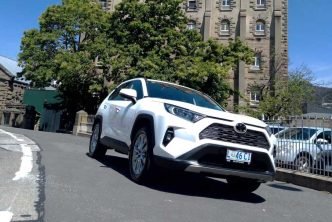Finally, that long-awaited road trip you’ve been looking forward to is coming. The leisurely drive will help you get away from the usual hubbub of routine life. It will help you clear the mind and refresh your spirits.
In the excitement of packing and getting ready for your road trip, you shouldn’t forget to pay attention to your car. If your vehicle will be your primary mode of transportation for this trip, it needs to be in top form before you head out on the road. A safe car ensures your safety and the safety of any loved ones who may be travelling with you.
The surest way to stay safe on the road is to have a checklist. A smart driver is a safe driver. A quick and handy checklist for a quick once-over is the safest way to ensure you’re not missing anything critical before you make that long drive. Ten minutes is all it takes to make sure you arrive at your destination safely and keep your loved ones happy.
Here are the critical safety checks every driver should make before embarking on the road:
Table of Contents
Car’s Battery Health
The last thing you want is to have a breakdown in the middle of nowhere. Even worse if it is somewhere with poor cell service. Before every long-distance drive, just put your mind at ease knowing that your car battery is working fine.
Checking on your car battery health is easy, even without equipment. One sign to watch out for is a slow crank when you turn the key in the ignition. If it takes longer than usual for your car to start up, that might indicate your battery could need replacing soon. The life expectancy of most car batteries is anywhere from two to three years. If you’re close to the three-year threshold, it might be worth changing out your battery before it goes completely flat.
Car Tires
In this case, it would be your tires and your wheel that need to be aligned properly. Before you hit the road, do a visual check of your tires and see if anything is uneven or worn out. If your tires are worn-out on one side, it could indicate that you have an alignment problem that needs looking into.
Drive to your nearest gas station and have your tire pressure checked out too. Your tires should not be over or under-inflated when you’re attempting to drive long distances. It might be a good idea to get a new set of tires before going on a long road trip. However, ensure you test these new tires before the trip just in case they need any adjustments.
Warning Lights
Your car’s dashboard can sometimes tell you all you need to know about how your car is doing. A dashboard has several warning lights as part of the car’s overall safety system. If you see any warning lights flashing, that’s an immediate signal that you should head to your nearest mechanic straight away.
When you turn the key in the ignition, all the warning lights should come on momentarily. Watch for any lights that don’t come on at all. It could be a sign that your electrical system needs looking into.
Brakes
Do your brakes seem to sputter or shudder when you hit the pedals? Do they emit something that sounds like a squealing noise throughout your drive? If the answer is yes, then it could be the friction material on your pedal pads that needs replacing.
Before heading out on any long-distance drive, it’s worthwhile checking your brake system’s hydraulic fluid reservoir too. It is also a good idea to have the reservoir regularly flushed to avoid any water build-up.
Wipers
Your windshield wipers should leave you with a squeaky-clean windscreen when they swipe away water that hits. If your wipers still leave your windscreen looking blurry, that means you should replace them before heading out on your road trip.
It is easy to check if your wipers need to be replaced. You don’t have to wait for the rain to do it either. Windscreen wipers should always dispel water effectively. If yours doesn’t, you shouldn’t be on the road until it does.
Car Fluids
Finally, it’s time to top off all your fluids before your car can be deemed safe and roadworthy enough to make the trip. Your radiator fluid, coolant, and transmission fluid should be well and truly filled per its reservoir requirements. Nothing should be running low before you drive out.
Your car relies on a number of different fluids to keep it running. If you’re not sure which fluids should be checked and topped off regularly, especially before a long drive, your owner’s manual should shed light on that information. Once you’ve done all of that, you’re ready to go! Happy road tripping!





